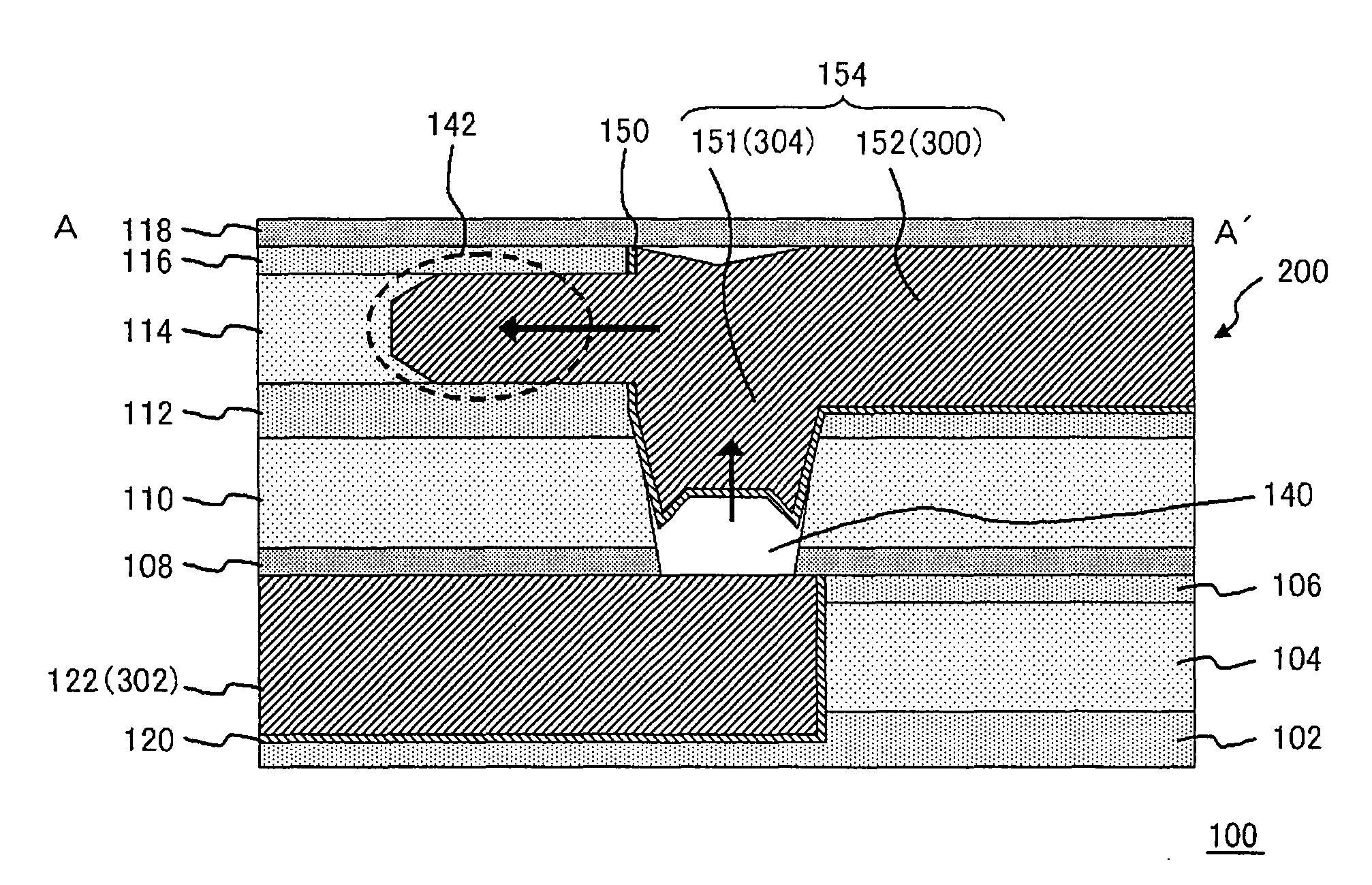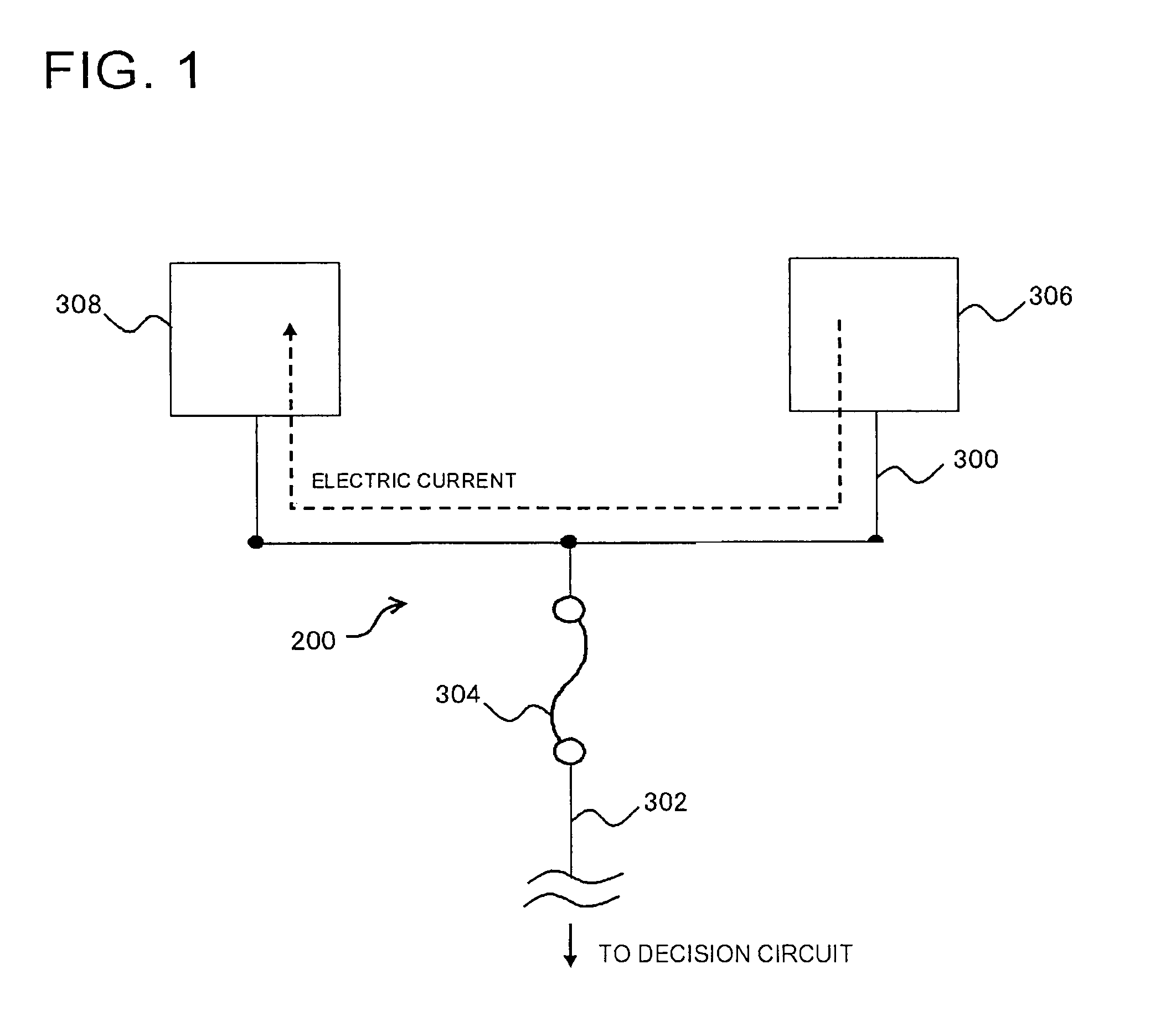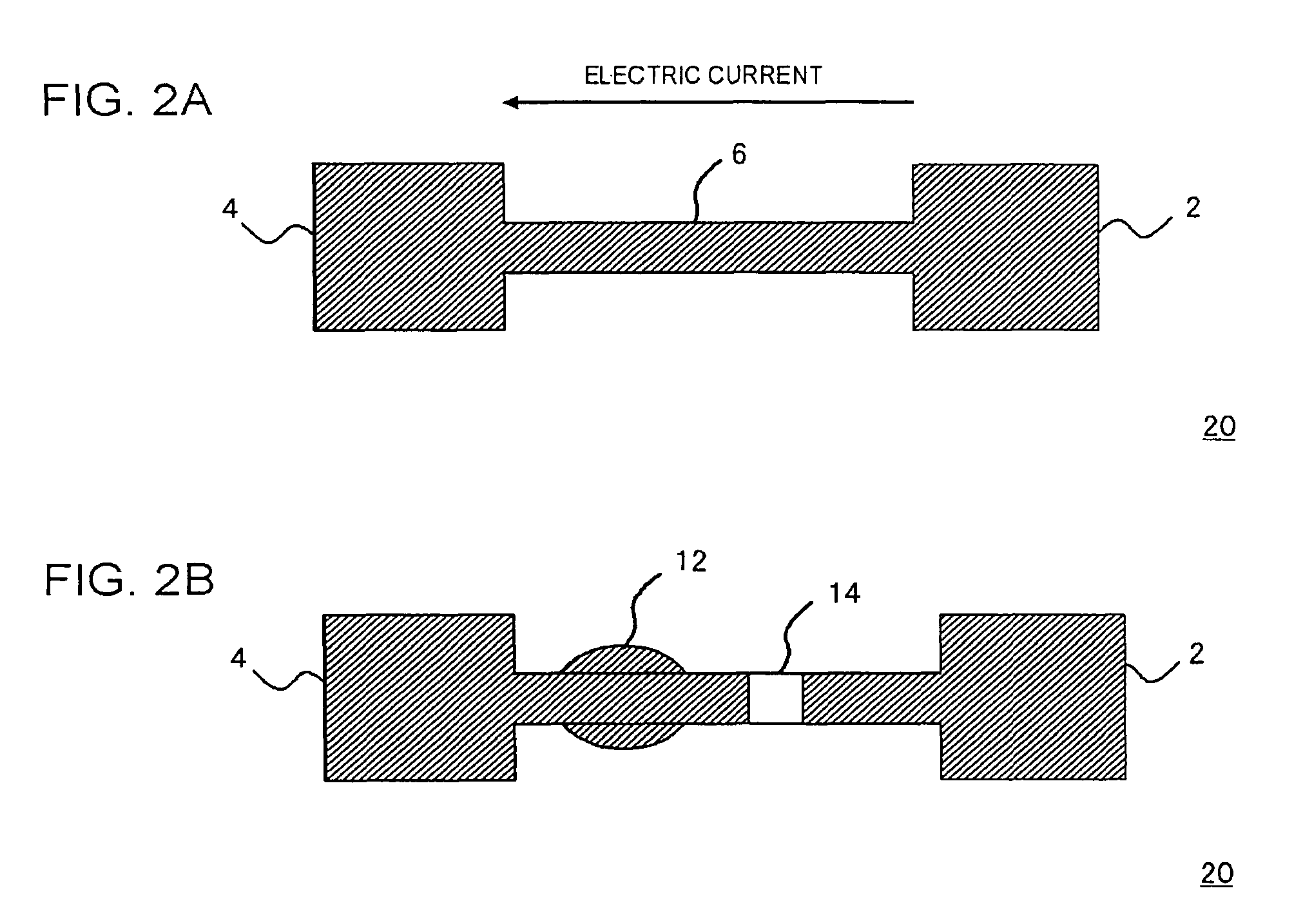Semiconductor device and method for cutting electric fuse
a technology of electric fuse and semiconductor, which is applied in the direction of semiconductor/solid-state device details, radio frequency controlled devices, instruments, etc., can solve the problems of defective cutting, electric fuse acquisition a lukewarm electric resistance, and incomplete cutting of fuse links
- Summary
- Abstract
- Description
- Claims
- Application Information
AI Technical Summary
Benefits of technology
Problems solved by technology
Method used
Image
Examples
Embodiment Construction
[0035]The invention will be now described herein with reference to illustrative embodiments. Those skilled in the art will recognize that many alternative embodiments can be accomplished using the teachings of the present invention and that the invention is not limited to the embodiments illustrated for explanatory purposed.
[0036]FIG. 1 is a layout diagram, showing a configuration of an electric fuse 200 in the present embodiment. The electric fuse 200 is composed of a fuse link 304, a first interconnect 300 coupled to one end of the fuse link 304, and an electric current inflow terminal 306 and an electric current drain terminal 308 formed in one end and another end of the first interconnect 300, respectively. The fuse link 304 is provided between the first interconnect 300 and the second interconnect 302, and functions as creating an electrical coupling or cutting between the first interconnect 300 and the second interconnect 302. In a condition before cutting the fuse link, anoth...
PUM
 Login to View More
Login to View More Abstract
Description
Claims
Application Information
 Login to View More
Login to View More - R&D
- Intellectual Property
- Life Sciences
- Materials
- Tech Scout
- Unparalleled Data Quality
- Higher Quality Content
- 60% Fewer Hallucinations
Browse by: Latest US Patents, China's latest patents, Technical Efficacy Thesaurus, Application Domain, Technology Topic, Popular Technical Reports.
© 2025 PatSnap. All rights reserved.Legal|Privacy policy|Modern Slavery Act Transparency Statement|Sitemap|About US| Contact US: help@patsnap.com



